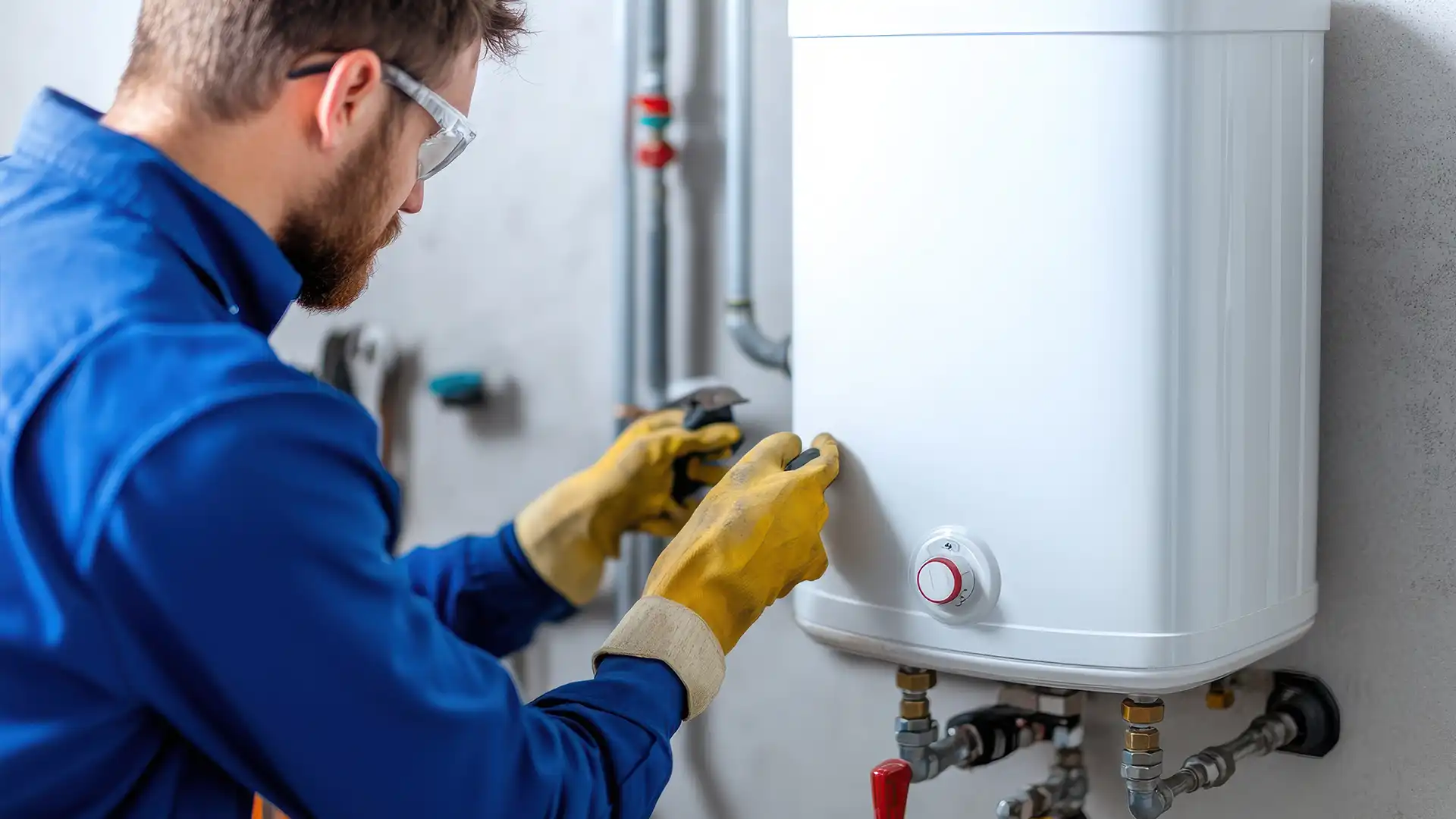9 Signs It’s Time to Replace Your Thermostat
Replacing your thermostat can help you save money on energy bills.
The temperature in your home goes a long way toward making you feel comfortable. If it’s too hot or too cold, being in your home can become extremely uncomfortable, leaving you unable to relax and enjoy living there. Your thermostat is the key to making sure your home is at a comfortable temperature and if it’s broken or outdated, it can get in the way of making your home a comfortable place to live.
But how do you know it’s time to replace your thermostat?
SIGN #1
Your Thermostat Is Analog

With a typical analog thermostat, you turn a large dial or slide a lever to adjust the desired temperature for your home. These thermostats offer good basic service, but a modern digital thermostat allows you to choose your desired temperature more accurately. With more accurate temperature control, you’ll be able to save more money on your heating and cooling bills. Plus, an analog thermostat is naturally older, meaning that it may be close to or beyond its life expectancy and could malfunction due to old age.
SIGN #2
Your Thermostat Isn’t Programmable
A programmable thermostat can offer even more savings by expanding the way you choose your home’s temperature. With these thermostats, you can program different temperatures according to a daily or weekly schedule without the need for constant manual adjustments. By automatically adjusting your pre-set temperatures according to your daily needs, you’ll be able to save on your heating and cooling expenses. Some modern programmable thermostats even come Wi-Fi-enabled so you can set temperatures while you’re away from home.
SIGN #3
Your Thermostat Is Older than Ten Years
The average life expectancy of a thermostat is about ten years. That doesn’t necessarily mean that your thermostat will stop working as soon as you’ve had it for ten years. However, ten years is a long time in the world of technology. Newer, more efficient thermostats will be available that can help you more effectively heat and cool your home as well as save on energy bills. Plus, old thermostats are more likely to break than newer ones.
SIGN #4
Your HVAC Turns On and Off
If your heating and cooling system keeps turning itself on and off, that’s a sign that your thermostat may have a problem. The thermostat is the part of your HVAC system that communicates the current temperature of your home to the actual heating and cooling part of the system. If it’s faulty, then it may not be correctly communicating with the rest of the system that heating or cooling is needed.
SIGN #5
Your Energy Bills Are Unusually High
Your thermostat is supposed to measure the temperature in your home via sensors and then transmit that information to the rest of the HVAC system. If it’s either not properly measuring the temperature or not properly transmitting signals to the HVAC system, it may cause your HVAC system to overwork, which can in turn cause your energy bills to be higher than normal
SIGN #6
Your Thermostat Gives Faulty Readings
Part of your thermostat’s job is to measure temperature readings from sensors to determine whether or not it needs to signal the HVAC system to turn on or off. If your thermostat isn’t working properly, it may register the temperature incorrectly, which means that your HVAC system won’t heat or cool your house properly. If you suspect that your HVAC system is giving faulty temperature readings, then you can use an indoor thermometer to determine the current temperature. If it doesn’t match what your thermostat says, then it may be time to replace your thermostat.
SIGN #7
Your Thermostat Doesn’t Respond to Settings Changes

If you change the settings on your thermostat, but nothing happens, that’s a sign it’s time to replace it. Your thermostat should adjust to new settings as soon as you input them into the system. Usually, once you make the change to the settings, you’ll hear the HVAC system respond right away. If it doesn’t, that’s a signal that something may be wrong with your thermostat and it’s not properly communicating your changes to the rest of the system.
SIGN #8
The Temperature Constantly Changes
If your HVAC system keeps changing the temperature in your home, that may be a sign that something is wrong with your thermostat. The thermostat could be changing the temperature settings on its own. Alternatively, it could be having difficulty maintaining a temperature or sending a signal to the HVAC system.
SIGN #9
Your HVAC System Is Short Cycling
Short cycling occurs when your HVAC system doesn’t fully complete the heating or cooling cycle. If you notice that your system continues to short cycle, it may be time to replace the thermostat. Short cycling can reduce the lifespan of your HVAC system because it’s working harder than it needs to.
How to Check for Problems With Your Thermostat?
If your thermostat isn’t working as well as it should, then you’ll need a thermostat replacement soon. Here are a few troubleshooting tips you can use to find out if there’s a problem with your thermostat:
- Check the thermostat’s display. If the display is blank, make sure it has a fresh and fully charged battery. Also, make sure the circuit breaker hasn’t been tripped.
- Trigger the furnace or air conditioner by adjusting the thermostat at least five degrees above or below the current room temperature. If everything’s working, you should hear a click from the thermostat and the HVAC system.
- Don’t forget to inspect the thermostat for loose or corroded wiring.
Contact us to schedule a thermostat replacement for your HVAC system. We proudly serve Orlando and the surrounding area. Our goal is to help educate our customers in Central Florida and the surrounding areas about energy and home comfort issues specific to HVAC systems.

